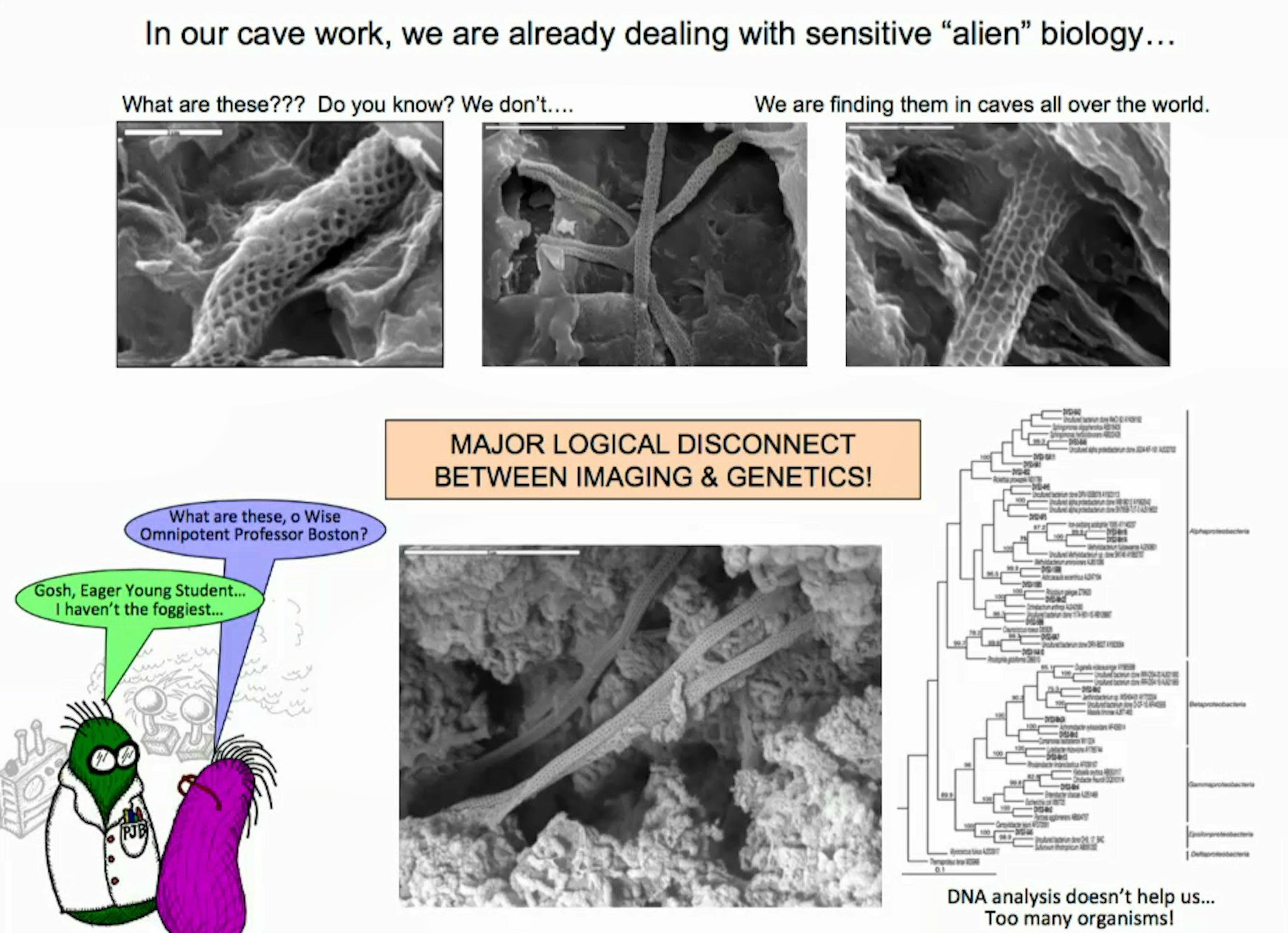If the Curiosity and Mars 2020 rovers actually find life on the red planet, there’s a good chance we won’t actually know what it is unless it walks right up to us.
This is a huge hurdle facing the search for life, said Penelope Boston, the Director of NASA Astrobiology Institute, in her keynote speech at the NASA Innovative Advanced Concepts Symposium on Thursday.
“It’s not like you can walk into a new environment with your lovely robot on some other planet, look at the ground and go gosh it’s life!” she said. “Instead it’s ‘gosh it’s blue something, and it’s got a copper signal, and I don’t know’ — and then you have to investigate.”

Actually identifying whether something is alive or just a weirdly shaped mineral is a huge challenge for astrobiologists looking for aliens. Extraterrestrial environments analogous to Earthly environments are usually limited to things like sulfuric acid caves. On Earth, these places are toxic to human life — yet they are capable of hosting a huge diversity of microbial life, including life forms that biologists still can’t identify.
The problem: we haven’t yet invented to necessary technology to identify these kinds of organisms. When trying to discover new microbes, genetic tools don’t always provide clear answers, and it is incredibly difficult and time-consuming to attempt to culture these microbes in a lab from a small sample. Since these are the major tools available, it doesn’t bode well for actually identifying life in space, which will probably look weird and microbial.

“I would sure like to solve this or have one of my students solve this before I drop dead, but I don’t know if that’s going to happen,” said Boston. “This is the magnitude of what we’re trying to do.” She closed the talk by asking the next generation of innovators to come up with better technologies to identify life — and soon, or we won’t know when we’ve finally found extraterrestrials.
Quelle: INVERSE

